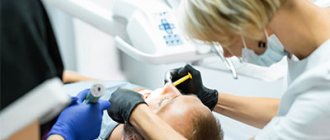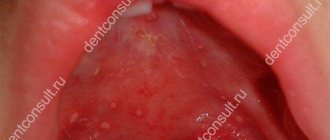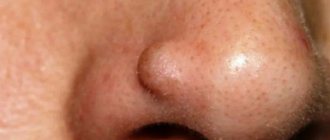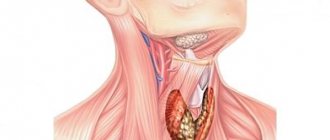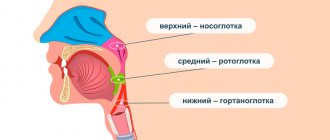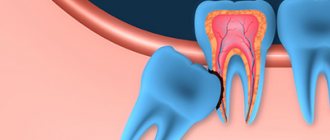Neurosis of the larynx and pharynx does not exist as a nosological unit. This is what is usually called persistent sensations: a lump in the throat, convulsions. Doctors at the Yusupov Hospital conduct a comprehensive examination of patients who complain of tension in the throat muscles and establish the cause and type of neurosis.
Global or partial changes in sensitive receptors of the mucous membranes, which cause pharyngeal neurosis, occur as a result of impaired neurotransmitter communication and infectious diseases. The most common cause of laryngeal neurosis is osteochondrosis of the cervical spine. A lump in the throat with neurosis can be felt due to the influence of the following factors:
- Inflammatory diseases of the ENT organs;
- Atrophy of cells of the laryngeal mucosa;
- Disorders of the central nervous system;
- Overwork.
Patients who have symptoms of throat neurosis are treated at the Yusupov Hospital with modern medications and methods of psychotherapy. Doctors individually select a treatment regimen. Medical staff respects the psychological problems of patients.
Types of pharyngeal neurosis
There are 3 forms of pharyngeal neurosis:
- Anesthesia;
- Hyperesthesia;
- Paresthesia.
Anesthesia of the pharynx is manifested by a decrease or absence of throat sensitivity and impaired swallowing. The disease develops in patients suffering from brain tumors, syphilis, and hysterical neurosis. The patient may aspirate food or saliva into the airway and develop aspiration pneumonia.
Pharyngeal hyperesthesia is accompanied by an increase in the pharyngeal and gag reflex. The patient has a cough and tries to cough up non-existent phlegm. This type of throat neurosis can develop after severe stress or a chronic disease of the pharynx or larynx. Patients experience a spasm, a sore throat, and a sore throat. He may feel a “scratching” sensation on the surface of the larynx.
Pharyngeal paresthesia occurs under stress. Patients feel soreness, itching and a “lump” in the throat. Women who are in menopause, impressionable and irritable people are susceptible to the disease.
Symptoms
Only a specialist can determine the cause of ulcerative lesions in the larynx in a child or adult. This is not an independent disease, but a symptom. Therefore, you should consult a doctor if at least one of the following signs appears:
- increase in body temperature up to +39 degrees Celsius;
Ulcers can also form on the tongue.
- redness of the eyes;
- headache and dizziness;
- red throat and laryngeal swelling;
- drying out of the mucous membrane;
- sensation of a foreign body in the throat or oral cavity;
- soreness and pain in the larynx;
- hoarseness or loss of voice;
- enlargement and tenderness of the lymph nodes under the lower jaw;
- pain in the area of the ears and nose;
- enlargement of one or both tonsils;
- deterioration of hearing function;
- labored breathing;
- snoring during sleep;
- ulcers on the tongue;
- putrid odor from the mouth.
Purulent formations in the throat in a child and an adult can be caused by various infections. However, all symptoms do not have to be present. For example, ulcerative-necrotizing tonsillitis develops without an increase in body temperature and general weakness, but is necessarily accompanied by bad breath and enlarged lymph nodes. Formations on the posterior wall of the larynx without fever indicate an advanced stage of pharyngitis. The symptoms of purulent pharyngitis are similar to viral tonsillitis: high body temperature, pain in the throat, bones, joints, headache, sweating, weakness, lack of appetite.
Symptoms of throat neurosis in adults and children
Throat neurosis is characterized by stable symptoms that differ depending on the type of disease. The main manifestations of the disease are tissue numbness and weakening of the swallowing reflex. The disease is accompanied by severe pain throughout the body. Patients may experience increased sensitivity of the hard tissues of teeth.
Throat neurosis is manifested by the following main symptoms:
- Feeling of lack of oxygen even after taking a deep breath;
- Feeling of a lump in the throat that does not go away after drinking liquid;
- Dryness in the larynx;
- Intense thirst;
- Bronchial spasm, which is accompanied by a gag reflex and is not relieved by bronchodilators;
- Sore throat, itching, sore throat, worsening at the moment of greatest irritation;
- Pain in the neck;
- Shooting pain in the ear.
Symptoms of throat neurosis are aggravated when a person is in a dusty or smoky place. An increase in reflex reactions leads to a gag spasm during a hacking dry cough.
Symptoms of throat neurosis intensify with excitement, irritability, psycho-emotional lability, and a migraine attack. Patients' mental and physical activity decreases.
A lump in the throat with neurosis provokes the occurrence of additional symptoms:
- Mood swings;
- Disturbances in sleep and wakefulness;
- Decreased appetite;
- Hypochondria;
- Manifestations of depression;
- Fear of suffocation.
It is especially difficult to diagnose throat neurosis in children, since they are susceptible to colds, the symptoms of which are similar in symptoms to those of pharynx and larynx neurosis.
Under the influence of provoking factors, the function of the child’s immature nervous system is disrupted, which leads to the loss of neural connections between active cells of the mucous membrane of the upper respiratory tract. Children are psycho-emotionally immature. They react sharply to all irritating factors of a psychogenic nature.
For this reason, throat neurosis in children is often accompanied by somatic pathology. The child's sleep may be disturbed and emotionality may increase. Children can swallow whole pieces of food, which leads to disruption of the digestive system. Sometimes children suffering from throat neurosis develop hoarseness or aphonia (complete absence of voice while maintaining whispered speech).
Symptoms and manifestations
When ulcers form on the mucous membranes, there will inevitably be unpleasant manifestations. Parents of young children should be especially attentive, because they cannot yet complain about their well-being. Here it is important to consult a doctor in time for help, however, there are cases when white ulcers in a child’s throat are mistaken for ordinary plaque formed from particles of dairy products that the baby has recently eaten. The external picture may resemble symptoms of purulent tonsillitis or stomatitis.
Symptoms of diseases in which ulcers form in the throat
- Red, white, or yellowish lesions on the tonsils,
- Redness of the throat mucosa,
- A sore throat,
- Dry throat and mouth,
- Deterioration of general condition,
- Temperature increase.
Throat ulcers in a child can cause severe pain, which leads to refusal to eat. In very young children this may be the only manifestation of the disease. Therefore, you should be wary if the baby is capricious and has completely stopped eating.
There may also be other manifestations, which depend on the cause of damage to the mucosa. In any case, even if there are no other symptoms other than ulcers that have formed, you should consult a doctor to make a diagnosis and prescribe appropriate measures.
Diagnosis of throat neurosis at the Yusupov Hospital
In order to establish the cause of throat neurosis, doctors at the Yusupov Hospital conduct a comprehensive examination of the patient. Using radiography of the cervical spine, osteochondrosis is detected or excluded. More accurate information is obtained after a computed tomography scan of the spine. Patients undergo laboratory tests (general and biochemical blood tests, thyroid hormone levels).
In order to exclude the organic nature of the disease, doctors perform magnetic resonance and computed tomography of the throat. A comprehensive examination includes Doppler ultrasound of the vessels of the brain and neck, and electromyographic study. Patients are consulted by an otolaryngologist, neurologist, vertebrologist, and psychotherapist.
Treatment of throat neurosis
Symptoms of neurosis of the pharynx and larynx disrupt the quality of life of patients. At the initial stage of the disease, it is performed on an outpatient basis. The patient is recommended to change his lifestyle, maintain the correct daily routine, alternate between wakefulness and sleep, go to bed on time, and get a good night's sleep. If the cause of neurosis is sleep, the symptoms of the disease disappear after several days of rest.
In the presence of an inflammatory process, anti-inflammatory therapy is carried out. A patient with throat neurosis is prescribed herbal sedatives. The selection of medications and dosage is carried out by a doctor. After several days of taking medications, the symptoms of neurosis of the pharynx and larynx disappear. If the patient feels a lump in the throat during neurosis, pureed liquid food is prepared for him, which does not irritate the mucous membrane of the pharynx. You should stop smoking, drinking alcohol, and eating spicy foods.
If the therapy is ineffective, doctors prescribe small doses of antidepressants in the presence of depression and asthenic syndrome. To treat throat neurosis, which manifests itself as hypochondria (constant worry about the possibility of contracting a serious illness), antipsychotics are used. If the cause of throat neurosis is a disease of the cervical spine, neurologists at the Yusupov Hospital treat it using medications, physiotherapeutic procedures and modern rehabilitation methods. In some cases, manual therapy is performed.
Psychotherapeutic techniques include hypnotherapy and cognitive behavioral therapy. Psychological correction techniques are aimed at teaching the patient effective ways to relax. Treatment has the following goals:
- Leading the patient to understand the true causes of the pathology;
- Identification of psychotraumatic factors;
- Eliminating them or learning to adapt to them.
Children suffering from neurosis of the throat and larynx are observed by several specialists: an otolaryngologist, a psychologist, a speech therapist (depending on age). Correct parental behavior increases the effectiveness of treatment. Most of the psychogenic factors that cause neuroses in children come from home.
Children with throat neurosis undergo restorative therapy, which includes vitamin complexes and mild sedatives. During the treatment of throat neurosis in a child, it is important to suppress obvious physical symptoms. When there is a sore throat, children are prescribed rinses, inhalations, absorbable tablets, and medications that increase the level of immunity. For infectious diseases, dekasan or trachysan are prescribed.
Psychotherapy for children involves classes on general development, training in relaxation techniques, which include breathing exercises. Babies receive a full body massage aimed at finding blocks and relaxing them. Psychotherapists recommend that parents change the psychogenic situation at home, reconsider their behavioral reactions and correct them. It is important that the child follows a daily routine. He needs to introduce healthy foods into his diet, enriched with vitamins and minerals.
A child with neurosis of the pharynx and larynx should be treated carefully. There is no need to scold him, but hysterics must be stopped immediately. With neurosis, a spasm of the throat is often observed. During an attack, it is necessary to help the child cope with the situation, calm him down, and explain how to breathe correctly.
Treatment process
Treatment of throat ulcers is etiotropic. Its goal is to eliminate the causative factors and rid the patient of the pathologies that led to this problem. Patients are prescribed local antibacterial and systemic antimicrobial drugs, antiseptics, gargles for a sore throat, and gentle nutrition.
Medicines prescribed by a doctor:
- Antibiotics - Amoxiclav, Azithromycin, Cephalexin;
- Antiviral drugs - Arbidol, Valtrex, Ingavirin;
- Antimycotic agents – “Ketoconazole”, “Itraconazole”;
- Local analgesics - Kamistad gel, Kalgel;
- Antiseptic throat sprays – “Tantum Verde”, “Miramistin”;
- Local anti-inflammatory lozenges or lozenges - Strepsils, Hexoral;
- Desensitizing agents - Zodak, Claritin;
- Corticosteroids - for long-term non-healing ulcers;
- Enzymes for cleaning the ulcer surface - trypsin, deoxyribonuclease;
- Regenerating ointments, sea buckthorn and rosehip oils to accelerate epithelization;
- Vitamins and adaptogens.
Gargling with Chlorhexidine, Furacilin or pharmaceutical herbal remedies is prescribed to all patients without exception. This procedure flushes out infectious agents and accelerates tissue regeneration. Sage decoction, chamomile tea, St. John's wort infusion and soda solution are effective remedies, and in combination with medicinal effects they give excellent results.
Traditional methods can be used only after consultation with your doctor and under his supervision. An infusion of blackberry leaves, tea with lemon, rose hips and raspberries, propolis tincture, a compress of cabbage leaves are the most popular folk remedies designed to eliminate sores in the throat.
Patients are not prescribed a special diet. They need to adjust their diet, replacing foods that have an additional irritating and traumatic effect on the inflamed mucous membrane with gentle, vitamin-enriched, healthy foods. It is useful to eat vegetable puree, oatmeal, poultry, offal, low-fat cheeses and cottage cheese.
- How to quickly cure a sore throat when swallowing: what does the symptom mean, simple recommendations
Physiotherapy - ultraviolet irradiation, ultrasound - has a beneficial effect on the treatment process. For most patients, throat ulcers go away within a week. Surgery is performed in severe cases when conservative therapy is ineffective. During the operation, the edges of the ulcer are excised, purulent-necrotic masses and plaque are removed.
Relieving throat muscle tension during neurosis
Tension of the throat muscles during neurosis causes breathing problems. In the complex treatment of neurosis of the pharynx and larynx, breathing exercises can give good results. It helps relieve spasm and tension in the respiratory muscles, restore breathing rhythm, reduce the dosage of medications, and speed up the healing process. You need to take an active short breath and a natural passive exhalation. The air should be inhaled through the nose, making a short, strong movement, and exhaled through the mouth.
The breathing movement and inhalation must coincide in time. The rhythm of breathing movements should correspond to the rhythm of the march. Breathing exercises for throat neurosis can be done standing, sitting or lying down. Their effectiveness improves in fresh air. To determine the cause and type of throat neurosis, exclude the organic nature of the disease and undergo a course of effective therapy, call the contact center of the Yusupov Hospital.
